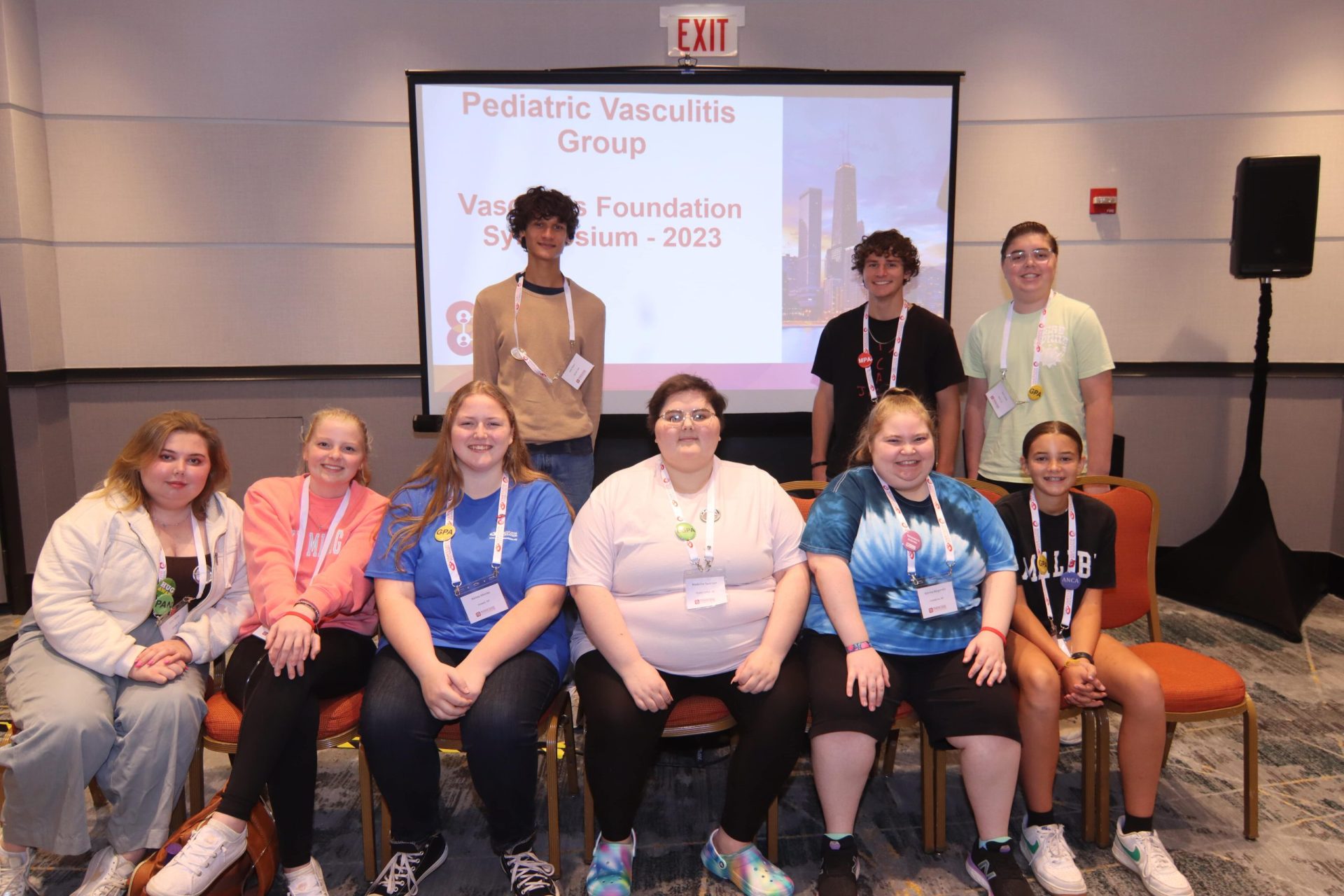Lung Involvement in Kids/Teens
Vasculitis and the Lungs
Most types of vasculitis can cause changes in the lungs. The most common types of vasculitis that affect the lungs include:
- Granulomatosis with polyangiitis (GPA)
- Eosinophilic granulomatosis with polyangiitis (EGPA)
- Microscopic polyangiitis (MPA)
Our lungs are made up of airways that carry the air we breathe to millions of tiny air sacs, called alveoli. The alveoli are surrounded by tiny blood vessels (capillaries and arteries). This is where oxygen is delivered to our blood, and where we get rid of the carbon dioxide that we need to breathe out. The structure of the lungs that holds everything in place is called the interstitial space.

Depending on which types of blood vessels are affected by the vasculitis, different changes can be seen in the lungs.
- There can be problems in the larger airways where inflammation from the vasculitis can cause narrowing of the airway.
- This may cause noisy breathing, cough, or shortness of breath.
- Blood vessels in the interstitial space can have inflammation that causes pneumonia or spots on the lung called nodules.
- This may cause cough, shortness of breath, or low oxygen levels.
- When the tiny blood vessels (capillaries) are involved, the inflammation may cause bleeding into the air sacs, small airways, or the interstitial space.
- This may cause cough, shortness of breath, low oxygen levels, or coughing up blood (hemoptysis).
- Any inflammation can end up causing scarring (fibrosis) if it goes on too long. This can cause the lung to be stiff and may make it harder to exchange oxygen and carbon dioxide.
- This may cause shortness of breath, low oxygen levels, or chest tightness.
Lung problems do not happen to everybody with vasculitis, but it is important to talk to your medical team if you are feeling any shortness of breath or have a new cough.
Lung testing may include chest x-ray, chest computed tomography (CT) scan, or lung function testing (PFTs). Depending on the vasculitis, some of this testing is done for everyone. Some of the testing may be done only if there are lung symptoms.
Some people may need a bronchoscopy to help with diagnosis and treatment. During a bronchoscopy, a flexible camera is used to look in the bigger airways. The doctor can look for any narrowing of the airway. A small area of the airways can also be “washed” with sterile salt water. Fluid samples from the washing will be taken to the laboratory and analyzed. This can help the medical team determine if there is infection or bleeding in the lungs.
Some people may need a lung biopsy to help with diagnosis and treatment. Usually, this means a surgery where a small piece of lung is removed and looked at more closely. This way the team can see what type of inflammation is present and may help with deciding on treatment.
The best way to treat the lung problems is to treat the vasculitis itself. This includes medicines that decrease inflammation and suppress (or lower) the immune system. For some people, having lung problems may mean needing to change or increase these medicines to keep the lungs as healthy as possible.
When lung problems are serious, people may need help with their breathing. This could mean using extra oxygen, or even being admitted to the hospital for other forms of breathing support. Sometimes more medications or procedures are needed to help control lung bleeding, infection, or inflammation. Your medical team may include a pulmonologist (lung doctor) who can help find, treat, and follow lung problems as time goes on. This usually means repeating imaging and lung function testing. There are newer treatments for lung fibrosis (scarring) that can be considered in some people.
It is important to talk to your medical team if you are feeling any shortness of breath or have new cough. The earlier lung problems are found, the faster they can be treated.
It is also very important to avoid anything else that can cause inflammation in the lungs. This includes anything inhaled that is not oxygen. People should avoid any exposure to smoking, vaping, or high levels of dust or mold. Secondhand smoke and vape can increase inflammation in the airways.
Certain vaccines, such as pneumococcal vaccines, can help prevent infection with bacteria that can cause severe pneumonia in children with vasculitis who are on immunosuppressive medications.

